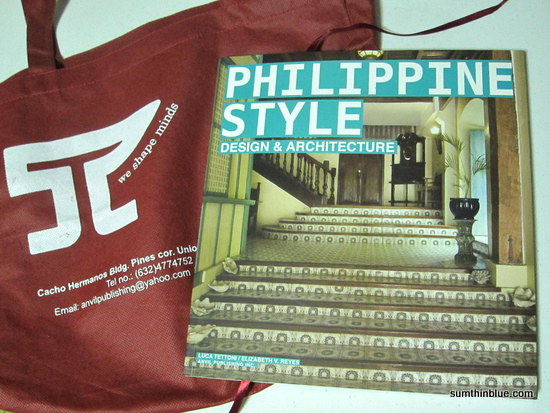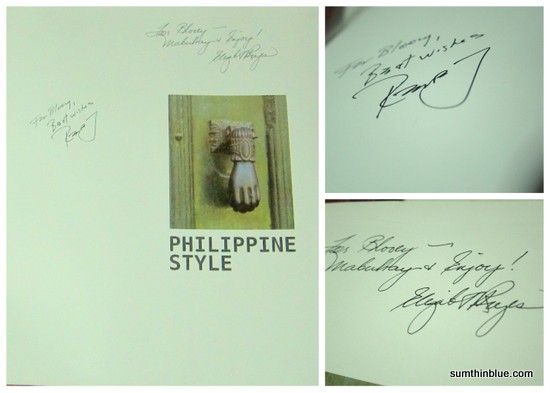I’ve been reading bits and pieces of the coffeetable book Philippine Style: Design & Architecture by Luca Tettoni and Elizabeth V. Reyes over several months now, and it’s proven to be the sort of book you can get lost in for hours, with a wealth of detail to explore.
Published by Anvil, Philippine Style is a showcase of Philippine architecture and design, tracing its history from the pre-colonial bahay kubo (nipa hut) to bahay na bato, down to the contemporary Filipino home, in full color and exquisite detail.

Philippine Style starts off with a thesis: that Philippine style is defined by a common Filipino identity, in traditional forms that are reinterpreted across the ages. The book then goes on to illustrate this by examining the nooks and crannies of select Filipino houses across time periods and different provinces, pointing out that characteristics of ancestral homes are echoed in modern-day Filipino houses.
The book then delves into the bahay na bato, dubbed the “quintessential tropical house” as remnants of the distinctive form continue to survive today, long after they have gone out of fashion. This is followed by a section that details the anatomy of the bahay na bato, from the ground up. Terms lost on today’s Filipino — volada, caida, azotea, comedor, calado — are clearly explained, with photos that showcase fine examples from different ancestral homes.
Over 20 different houses are further showcased in the book. In the section on ancestral homes, we read about the history of each house and the families that lived in it, unique details in the design, design influences, materials used, artifacts and furniture, and how the house is maintained today.
Transitioning into Philippine-style contemporary homes, the book traces the changes in Philippine architecture past the Spanish era, the new styles brought in by the Americans, and the designers that emerged from the 1930s onwards. The introduction then draws attention to the Filipino architectural leaders of the 60s: Leandro Locsin, Alfredo Luz, Felipe Mendoza, Gabriel Formoso and the Mañosa brothers, who started to infuse their modern designs with Filipino identity, a practice continued by certain architects and designers today.
Echoing the section on ancestral houses, we then read about homes by design icons and of prominent personalities. We learn about the design process that went into the house, its distinct Filipino elements, materials and decor, and how it adapts to the Philippine climate.
The book also features a beautiful gallery of traditional furniture and their forms and function, as well as a designers’ portfolio featuring the likes of Kenneth Cobonpue, Budji Layug, and other designers who work with indigenous materials.
I love the concept of the book, the grandness of what it set out to achieve, and how successfully it is executed, making it a definitive guide to Philippine design and architecture. The clean design is a joy to thumb through, and the careful organization of ideas and details indicate the extensive planning that must have gone into this monumental work.
While my training in the arts is not in architecture or interior design (although I did take a class with one of the book’s contributors back in college — Fr. Rene Javellana’s Aesthetics II: Philosophy of Architecture, if you must know), I’ve handled interior design accounts at work for years, and I’ve picked up a genuine interest for this branch of the arts along the way.
Mostly it appeals to the trivia junkie in me, and reading this book was both a visual and intellectual feast. In fact, when we toured the houses at Las Casas Filipinas de Acuzar earlier this month, I was surprised to find myself studying particular design features (le geek, in action) I wouldn’t have been able to pick out before I read this book. I also find myself marking out the heritage homes featured in this book for future provincial trips, especially on the next family visit to Bacolod (a Silay tour is in order). I do wish some ingenious guide would create a tour out of this book: I’d sign up in a heartbeat.
Whether you are reading it as a student of the arts, a professional in the design industry, a Filipino expatriate, a tourist, a Filipiniana collector, or even a curious reader, this book is definitely a keeper.
***
Philippine Style: Design and Architecture is available at National Book Store.





